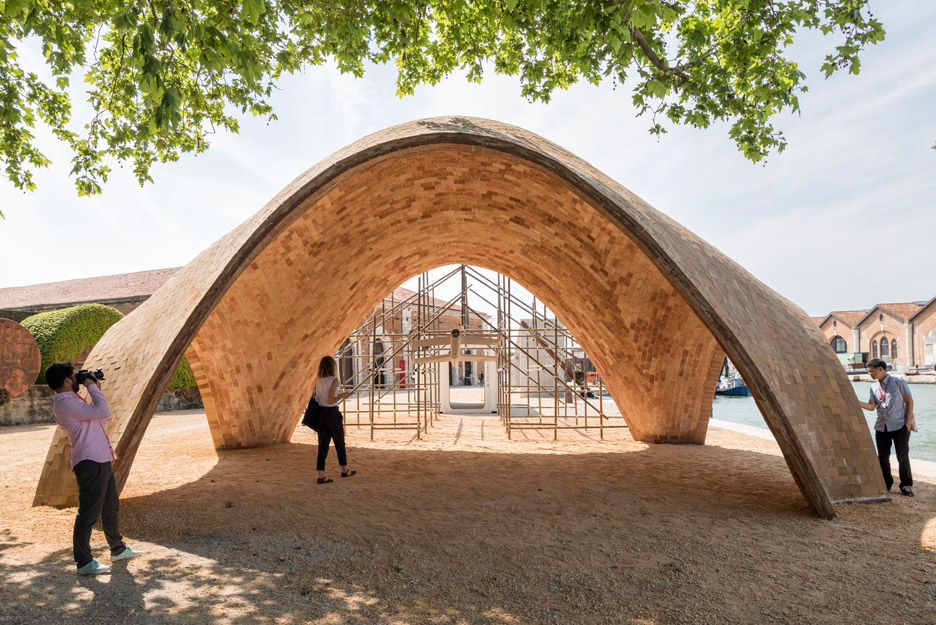Foster + Partners has unveiled the first full-scale prototype of its Droneport concept at the Arsenale, which is designed to transport medical supplies to remote regions in Africa using unmanned flying vehicles.
The structure is the inaugural project from the Norman Foster Foundation, set up by the British architect to anticipate technological advances in the field, respond to humanitarian needs and encourage a more “holistic” view of architecture.
The vaulted form is made up from two layers of a new type of compressed earth blocks called Durabric, developed by the LafargeHolcim Foundation for sustainable construction with researchers at the Block Research Group from ETH in Zurich and MecoConcept in Toulouse.
At the opening of the Droneport, Foster told Dezeen that the arching structure may be retained as a permanent fixture in the Arsenale’s grounds, forming an entrance pavilion to a small garden beside the Italian pavilion.
“This is a permanent structure and it would be a really great shame to take it down,” he said.
“The Droneport project is about doing more with less, capitalising on the recent advancements in drone technology – something that is usually associated with war and hostilities – to make an immediate life-saving impact in Africa.”
Its pilot project is to be launched this year in Rwanda and completed by 2020, and firm’s ambition is that every small town in Africa will have its own drone port by 2030.

The Droneport will be operated by Red Line, a drone company conceived by Jonathan Ledgard at the Swiss Federal Institute of Technology in Lausanne to serve developing communities.
While the primary objective is to transport medical supplies such as blood, there are also plans to establish a cargo network.
The Norman Foster Foundation is also exploring how a solar-powered building material developed by artist Olafur Eliasson, called SolarBrick, could be 3D printed in future drone ports.
The material has its roots in Eliasson’s design for a solar-power light named Little Sun, and would feature a solar panel on its outer surface to power an LED light on its inner surface. It could provide artificial lighting for drone ports in areas where electricity is scarce.
